CHATHAM ONT.= THE MAPLE CITYEarly Map of Chatham Ontario Canada on the Thames River Famouse People with connections to Chatham Chief Tecumseh- John Brown Rev. Josiah Hanson (Uncle Tom) Marie Dresiler Kenneth Duncan McLacklin (Keen Duncan) Geoffray O'Hara Fergie Jenkins Shae-Lynn Bourne Michell Wright Sylvia Tyson (Fricker) Dave Gagner Doug Anakin OUR PAST TO THE PRESENT We will travel from our past and then to our present in this city. Chatham is located in the southwestern corner of Ontario lying between Lake Erie and Lake St. Clair just off the 401 highway. Chatham area was first settled back in 1793 when Sir. John Graves Simcoe the first Lieutenant Governor of Upper Canada designated that the area at the forks of the river (now known as the Thames River and McGregors Creek) as a military post and the first family bought a piece of land. There were only a few people living here when they had the Civil War of 1812, but by the year of 1851, the town had increased to 2000 people, and incorporated as a village, and in the year 1855 Chatham became a town. The town was first built up along the south shore of the river and creek, and the roads were of mud and almost impassible in the spring and fall, and after 1855 King St. the business district was paved with cobblestone, brought in from Pelee Island on Lake Erie. In 1869 the cobblestone was replaced with wood and asphalt, which Chatham was one of the first in Canada, to have this kind of road surfacing.  By the year 1864 the town had 4,600 residents. The population being about 1/3 black, some of them escaped slaves. The "Underground Railroad" which operated prior to the Civil War, helped slaves to come to this area. Several surounding villages sprang up to accomodate these. Many of these returned to the states after the Civil War was over, and it was safe for them to return to their families left behind.  In the War of 1812, between the Americans and British, this area had a few battles. Shawnee Indian Chief TECUMSEH had sided with the british even though he had been born and raised in Ohio. A battle occured on our river with the British and Americans, both backed up with indian tribes. The fighting came up the river from Detroit to the "forks", (in recent years we have had a recreation of this battle) This is where the indian chief Tecumseh was wounded, and later died up the river. His body was never found, and there were conflicting reports of what happened to it. There were rumers that the Americans took his body and skinned him, using his skin for their drums, so that they could beat upon him. The indians would not say where he was buried. The spot is now Moraviantown and a indian reserve. There is a monument on #2 hwy for tourist. The "forks" is now a Park named after Tecumseh. And a permanent Armory hall built at one side. Tecumseh was born in 1768 and died in 1813.  Some other events that took place in the early 1800's in this area was the arrival of Rev. Josiah Henson, and John Brown, both abolitionist working with the "Underground Railroad" In 1833 the Canadian Parliament passed a bill that all slaves in Canada were free, and the bounty hunters were not allowed to come after them over the boarder. Chatham and the surrounding area became a way off station, for the slaves coming through the Underground Railway from Ohio and Michigan.  JOHN BROWN (a white man) was born in Connecticut in 1800 to a deeply religious family. Led by his father who was vehemently opposed to slavery, they moved to Ohio when John was 5. During his 59 yrs he moved around the country, (and had 2 wives and fathered 20 children). He had several businesses but never any were succesful. He always found a way to support the abolitionist cause. (His story is too long to put here but you may read it on the internet) It is said that John Brown came to Chatham in April of 1858, looking for support for his cause to help the slaves. He got off a train from Detroit and Kansas, with a few of his followers and walked down King St. Crossed over the muddy road to the "Provincial Freeman" office, where he met with Israel Shadd, Ed. and Pro. Over the next month he would have several meetings with then prominent and prosperous businessmen and farmers, that had once been slaves and came through the Underground Railroad several years before. At this time there would be about 4000 people in Chatham and 1/3 of them colored. He held many meetings in the Princess St. School, and fire engine house #3, and the First Baptist Church on King St. The church at that time had a wood siding but has since been redone with brick siding as in the present day picture. After a lot of preliminary conferences Brown let it known that a Masonic Lodge was being organized among the colored people. 46 people - 11 whites and 35 colored attended and concluded the meeting. Elections were held and John Brown was made "Commander in Chief" and his son and others were named in variouse posts, where he presented his "Provisional Constitution" It was at this meeting May 10th, that Brown finally let the men know what his plans were, to set up a stronghold in the Appalation Mountains, and from there to wage gorilla warfare on the slave owners, and excite a uprising in Virginia, hoping the slaves would run off from the plantations. The work of the conventions was finished May 10th, but due to the lack of funds, they did not leave until May 29th, and they finally left the area after traveling to many settlements to recruit support. Brown returned to Chatham at least once in the following summer of 1859 to update his followers on his plans. After he left it was voted that Chatham should send a man to help, and one man was picked to follow. Brown had contacts all over the states, and they bought him a "Kennedy" farm as a distribution centre for the guns and ammunitions, which were purchased and assembled in large quanities. There was a spy amongst his men that was notifying the U.S. Government of his doings. 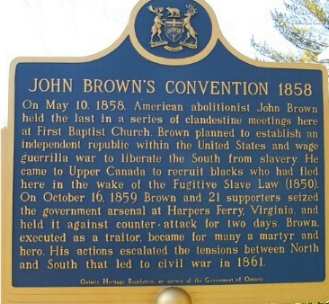 Oct.17th 1859 telegraph wires sent the story of the Harper's Ferry Virginia assault. Brown and his 22 men, 5 of them colored, thought he would be reinforced by black recruits. By mid morning 80 U.S. Marines led by Colonel Robert E. Lee, and over a couple of days fighting were defeated. Ten lay dead of Browns men and 5 (including the Chatham man) had escaped. After the bungaled attempt to capture Harpers Ferry, he was wounded and captured, and tried. His trial opened in Charlestown on Oct.27th, and he was hanged on Dec. 2, 1859. This event is said to have been a contribution to the start of the American Civil War. November 1860 Lincoln was elected as president.  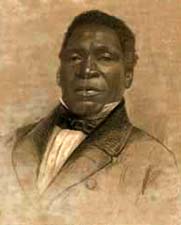 REV. JOSIAH HENSON was born 1789 and died in 1883. He was later known as the character Uncle Tom in the book "Uncle Tom's Cabin" His own autobiography can be read on the internet also as "Truth Stranger Than Fiction" which is very detailed and interesting. If you wish to read about him in more detail click onto the link above. He was born a slave June 15, 1789 in Charles County Maryland, youngest of 6, when they were all sold at a slave auction. He was sold 3 times before the age of 18. Josiah learned at a young age to obey his master, and do good work and not make trouble. He would be repaid for it. He learned the farm work well, and was an outstanding worker, and became a supervisor, and was able to get better crops for his master, with the support of the slaves under him who trusted him. He listened well to all men arround him and was allowed to go to church meetings. In 1828 he became a Methodist Preacher, without any schooling or training just listening to others preach. He ended up preaching and lecturing about his life in England, before the Queen and other Notables. At 22 yrs he met a neighbour slave girl at a religious meeting and later married her. He eventually fathered 12 children (4 of which died). His master had financial problems and didn't want to sell off all the slaves to Georgia. So, sent him on his way to his brothers plantation in Kentucky, along with some of the slaves and papers to get him there safe. He met several people along the way that tried to encourage him to go north to Canada, as he was close to escaping, but he trusted his master and wouldn't do it. Life was not the same and after a few years he made his escape to Canada. Traveling by night and in the woods with his two youngest on his back trudged through Indiana with the help of some Quakers for food. Eventually after a couple of months made their way to Sandusky Ohio, where he found a Scottish boat captain that took them to Buffalo, at the other end of Lake Erie, and paid a ferryman to take them across to freedom in Upper Canada, (as it was called then) (His story was so interesting that I was not able to stop until I finished it) Josiah eventually learned to read from his 12 year old son, who had not realized his father could not read. Josiah eventually found himself in Dawn Township on the Sydenham River, where there was nice fertile soil to farm. He along with other slaves formed a community and eventually a school to teach the children, and a saw mill to make a living. There is now a Historic Tourist site here just outside of Dresden, and visited by thousands every year. In 1830 his first trip to freedom and Canada, there were only a couple hundred blacks, but by the time of his writings in 1880, there were about 35,000. He worked with the Underground railroad, and in 2 more trips to the states, he brought back a total of 118 slaves to freedom. He sailed to Boston to sell his Black Walnut lumber, and then to England to the World's Fair to display his lumber. He met with the Queen and Archbishop, and rubbed shoulders with the rich. In the visit with the Archbishop he could not understand that Henson had not had a college degree with how he spoke, and his knowledge. He died in 1883.  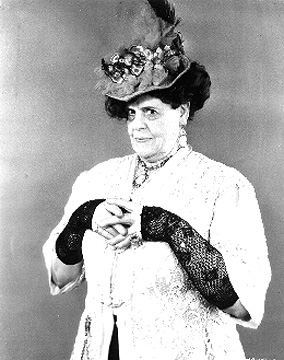 MARIE DRESSLER Was born in Cobourg Ontario in 1869, real name was Leila Marie Koerber, daughter of a music teacher, and when as a small girl lived in Chatham. The story is from my grandparents, that she had lived in the house on Elizabeth St. many years before they bought it in 1918. Marie joined a stock company at the age of 14 against her fathers wishes. She studied opera but was better with comedy and appeared on stage and in vaudeville before going to Hollywood and making her first film in 1914. She performed on the stage and in film with many big stars, as a charactor actress. She later made "Tugboat Annie" in 1932. She passed away in 1934.  KENNETH DUNCAN McLACKLIN also born in Chatham. His stage name was Ken or(Keen) Duncan and presumed he went to Queen Mary School (as it was on the next street.) He played a charactor actor in numerous westerns as a villian. (I remember seeing him as always the bad outlaw, at the saturday afternoon Movies). He played in several "Abbot and Costello" films. He also tried out for the Rhett Butler role in "Gone with the Wind" but we all know who got that role. My father used to tell us kids of seeing Ken riding his horse out in the empty field behind our house. His Family home was on William St. which is now a funeral Home. His father was a professor at the Chatham Business Colliage, on the next street across from Queen Mary School.  GEOFFREY O'HARA Born in 1882. A well known Chatham native back in the early 1900's was a song writer who wrote over 300 songs, and one well known one was "K-K-K-Katy my Beautiful K-K-Katy" sung in the trenches of world war one. He wrote some religious tunes of which "I walked Today Where Jesus Walked" and "Prayer For Peace". O'Hara was credited with creating "Tin Pan Alley" the stage production. His school years in Chatham were at McKeough Public School, where he had many leading rolls in the musicals. He was a choir boy at the Holy Trinity Church, graduated from the Chatham Collegiate Institute (CCI) in music. He left the city to further his career, and went on to teach music and song writing at University of South Dakota and the Columbia University. O'Hara appeared on the Ed Sullivan Show several times. He passed away in 1967.  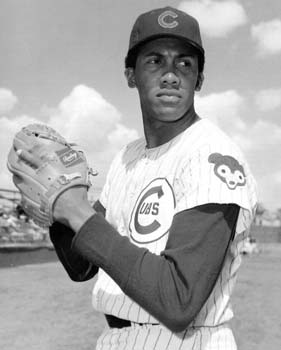  FERGUSON ARTHUR JENKINS Fergie was born December 1943, and raised in Chatham and a great athlete in all school programs. While going to Queen Mary School, and in the 5th grade he was climbing a tree out the back of the school about 8.30am before school went in, and fell out of the tree breaking both wrists. But this did not hinder his athletic career. He started playing ball under the Community Centre Minor Baseball programs with the squirts. It was in the Bantams that Fergie started pitching. My brother chummed with him at school CVS and in sports together, and brought Fergie home one day after school, and kind of shocked our mother. And not knowing how famous he would become. A local scout agent discovered him, and he was signed up by the Phillies in 1962. They were not allowed to sign him before he was out of school. He won many awards every year in school for field days etc. He won the (CVS) Chatham Vocational School "Athlete of the Year" in 1962, along with my brother Leslie Wood as co recipient, (as they tied) and in 1963 he got the "Sportsman of the year" by the city. When he finished school in 1962 he was allowed to sign the contract for baseball with the Phillies. February 22 1963 he left for Clearwater Florida for training. He played with the Phillies for a couple of years, and was traded to the Cubs where he had 6 straight years with 20 or more wins from 1967 to 1972. He was traded several times to different teams and in 1987 was inducted into the "Baseball Hall of Fame" at Cooperstown Ohio. Several Bus loads of fans from here went to see the induction. Over his 19 year career he retired with 257 complete games and 49 shutouts. He also holds the 9th highest strikeout total in history (3,192) and was the National Leaque Cy Young Award winner in 1971. Retired from playing in 1985. Jenkins is currently employed with the Rangers serving as pitching coach for the Triple-A minor league team in Oklahoma City. He had a big home outside of town, and he married and had 2 girls. He later divorced her, sold the farm which is now a Veterinarians Clinic, and married a lady from the states where he now resides. His parents have since died in town and he does come back often for charities.  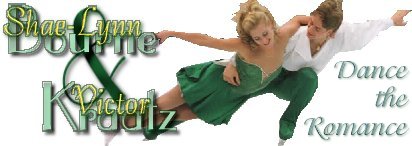 SHAE-LYNN BOURNE Born Jan 1, 1976 a Chatham native and started to skate at the age of 7, and dance partner of Victor Kraatz, who was born in West Berlin Germany in 1971. Later moved to Vancouver BC. At 15 Shae-Lynn went to Toronto where she had been part of a pairs couple, and Victor had just lost his dance partner to injury, and was looking for a new partner. They were introduced and after just a few minutes out on the ice they knew that they now had the right partner. The first year together they won the Jr. Dance Championship in 1992 and went on to Seniors. They have now had their 8th time as winners of the Canadian Figure Skating Champions. They have won many championships, such as 2 time Olympians, and 4 times World Bronze Medallists. They are a big crowd pleaser when on the ice and especially their hydroblading which they invented. One move is the "Shae-crusher" which is pictured here.  They have performed in many ice shows such as "Stars on Ice" and "Champions on Ice" and "Skate the Nations" on the TV. Shae-Lynn has had surgery on her knee and kept them out of performing last year, but they are back in winning performance this year. They have moved around the country to different cites for training with different instructors always improving themselves. Shae is now residing in Conneticut with her new husband Nikolai Morozov who was her coach/choreographer late in their career. He was their coach in the 2003 World championship in Washington. 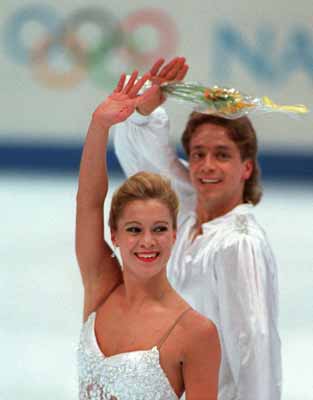 Shea married on August 12th 2005 on her grandfathers farm near Chatham. It was a small wedding of 14 close family and friends at the wedding but a reception of about 80 at the Stargazers on the Thames. They plan on going back to work as they coach together since her split with Kratz in their dance team. Bourne and Kratz were a 10 time Canadian Ice champion.  Shae-Lynnperformed recently in Chatham on Oct 15, 2006 at the Thames Campus Arena with the "Passion on Ice " a fundraiser for the "Every Life Counts" a Physicans Recruitment committee. Shae-Lynn is the chairperson for the committe. She brought in local talent of skaters as well as Brian Orser a two time Olympic Silver Medalist among many other awards. Among others that performed were Violetta Afanasieva and Pete Dack, Anabelle Langlois & Cody Hay. Olga Orlova who is one of Shae-Lynn and Nikolai's students in coaching. Someone to watch in the future as she is looking for a partner in the dance.  On Oct 20th it was anounced that Shae=Lynn and Victor would be honoured by being inducted into the Skate Canada Hall of Fame folowing the Canadian Champions 2007 on Jan 21st. at the Hamilton Metro Centre. Shae-Lynn is curently coaching with husand Nikolai and Victor and his wife Maikki are the ice dance directors at the B.C. Centre of Excellence in Burnaby B.C.  MICHELL WRIGHT 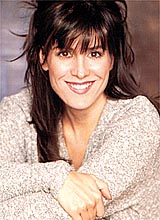 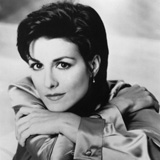  Born in a Chatham hospital in the late 60's, and her hometown was Merlin a small farming community. Living now in Nashville. Her parents were both local country performers, and she went on to Toronto as so many do. She went to college for a year studying counselling for Mentally, physically challenged individuals. At 17 she performed with her newly formed band "The Marquees". She first started playing the drums and then switched to guitar in her teens. She writes a lot of her own songs, and her first was "Reaching for the Stars". She won the ACM top new Female Vocalist in 1993. She has became a Canadian Superstar and is one of the most awarded artist in Canadian country Music history. She has over 30 major music industry awards to her credit, and a string of 23 top ten hits. Her "Take it Like A Man" won many awards. Others were "Safe in the Arms of Love" "He would be Sixteen" "Nobodys Girl" and "Walking after Midnight". She made her first video in 1990 in Toronto "New Kind of Love". She makes many trips back to this area, in both singing and for charities. Michelle was the Honourary Chairperson for the "Operation C.A.T. Scan" a fundraiser campaign, that raised almost 2 million dollars for the St. Joseph's Hospital to purchase its first C.A.T. scan machine. In honour of Michelle a local Flower Grower developed a Rose for her and it is in the Rotary Park with a plaque which will follow here.  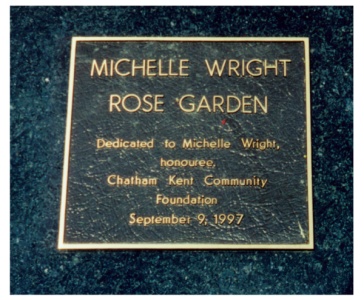  SYLVIA (FRICKER) TYSON Was a Chatham native born in the early 1940's, went to school at the McKeough Public School and Chatham Vocational School. Her mother as a music teacher/organist/ choir-director/ inspired her to start singing. She went on to Toronto singing folk songs, where she met up with Ian Tyson. Ian was born in 1933 in Victoria BC a cowboy lover and road horses in local rodeos. He learned to play the guitar in the hospital, after being tossed from a horse and getting injured.   He moved to Toronto just as the folk music was getting started. Ian became a star singing folk songs in local coffeehouses. He was introduced to Sylvia Fricker who knew quite well Folk Music. They were hot by their second album. They played across North America in local coffeehouses and colleges. (and our Tupperware Convention). They fell in love, married, and had one son. In 1969 they were offered a job hosting a live music show on Canadian TV. The show was a hit, and it was renamed the "Ian Tyson Show". Which was the beginning of the end of their marriage. After 5 years they quit and split up but kept friends. With the money from his big hit "Four Strong Winds" helped him buy his ranch in his love Alberta and he moved back there singing in Calgary's honky tonks, back to his country music to make money for repairs on his ranch. He has since regained his popularity there. He did help Sylvia after they broke up to produce her first solo album. She went on to have a solo career first appearing in 1993 in Toronto. She is now a part of the "Quartette" a Canadian County and Folk Music supergroup. Sylvia went on to write many songs one of which was "River Road" (which I had always figured she wrote about our River Road) recorded by Crystal Gayle. She also wrote "You were on my Mind" "Denim Blue Eyes" and "Woman's World" She toured with a theatrical show that she produced "River Road and Other Stories". She had made 13 albums with Ian even after their divorce. Sylvia has gone on with quite a musical career, as a impressive solo since then. She has hosted the CBC radio show "Touch of Earth" and a national CBC TV show "Country in my Soul" She has released 7 solo albums. In 1992 Sylvia was inducted into the "Canadian Music Hall of Fame". In March of 1995 she received the "Governor General's Order of Canada" She has performed in the theatre production of "The Piano Man's Daughter". She also appears on the Cdn History Chanel as host, and narrated by Sylvia for "History Lands" Their son Clay Tyson now 34 released his debut album "Kick at Dawn". She also wrote "You Were on My Mind".  DAVE GAGNER  Dave Gagner came up through the Chatham minor hockey system before joining the Brantford Alexanders for two full seasons. In 1982-83 he had a great offensive season, scoring 55 goals and 121 points in 70 games. That summer Gagner was selected by the New York Rangers in the first round, 12th overall in the NHL Entry Draft. In 1983-84 he devoted himself to playing for the Canadian National Team, suiting up for 50 games and also playing in the 1984 World Championships. Gagner then lived out a dream by playing for Canada at the 1984 Olympics in Sarajevo, and although the team failed to medal, he always regarded it as one of the main highlights of his hockey career. In 1984-85 Gagner began his pro career playing 38 games with the New York Rangers, scoring six goals and 12 points. He remained with the Rangers' organization for another two years but never was able to completely get over the hump and earn a full-time roster spot. The bigger, stronger players in the NHL posed a noticeable problem for players such as Gagner, who relied on speed to combat a lack of size. But in the NHL most players had both size and speed. Gagner was traded to the Minnesota North Stars in October, 1987 hoping to revitalize his sagging career. He seemed to like the Stars offensive system much more and managed to surpass the 30-goal plateau in each of the five full seasons he was with the team. He also had two 40-goal seasons with his best year coming in 1990-91 when he had 40 goals and 82 points. That was also the year the North Stars advanced to the Stanley Cup finals, where they lost to Mario Lemieux and the Pittsburgh Penguins. Gagner was an offensive juggernaut throughout the playoffs for Minnesota, collecting 27 points in 23 games. Gagner remained with the North Stars in Minnesota until the club moved to Dallas and he remained with the team for three more years in Texas. Midway through the 1995-96 campaign he was traded to the Toronto Maple Leafs, but he was there for just 28 games before they shipped him off to Calgary. He played the entire 1996-97 season with the Flames and had a solid 60-point season In the summer of 1997, Gagner signed a free-agent pact with the Florida Panthers where he played for a little over a year before being traded to the Vancouver Canucks midway through the 1998-99 season. He finished out the year and then announced his retirement after 15 yrs in the NHL. He is now living in Minnesota and has a business of selling outdoor rinks and as I understand has built a arena for the young kids so that they don't have to get up at 4 in the morning to go and play hockey. Born Dec 11. 1964 in Chatham Our local legend a graduate of our Minor Hockey Association and ex-NHLer, Dave was honoured Dec 28 at the opening of the Silver Stick tournament with a print of himself and with his number 15 being retired to hang above the home bench at Thames Campus Arena. 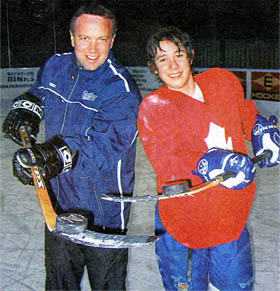 Dave and his son Sam a future NHLer? 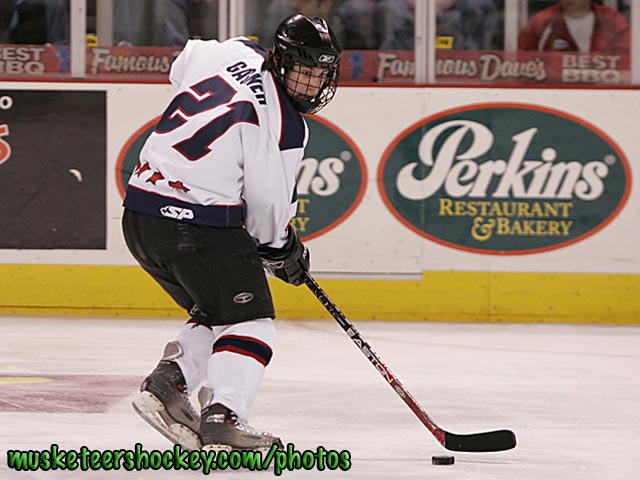 Sam still a high schooler at 16 is playing for the Soux City Iowa Musketeers is the top scorer with 8 goals and 28 points in 27 games up to last dec. 19th. in the USHL  DOUG ANAKIN A Gold Medal Winner in Bobsled in the 1964 winter Olympics in Innsbruck. He was born in Chatham in 1930, (my cousin) went to school at the McKeough Public School, and graduated from Chatham Collegiate Institute (CCI). He got hooked up in the winter sports while attending Queen's University in Kingston Ontario. After graduation he taught phys-ed in a handful of cities. He went to England to teach and travel across Europe to indulge in his passion for skiing and mountain climbing. He met up with some University friends and got in with the bobsled gang as he had been practicing the luge. After a couple of slow runs with the luge Vic talked him into going with them on the 4 man bobsled. After thier first run down the course they knew that they had set a record, and they won the event that year in a run of 4.14.16min. His companions were Victor Emery, John Emery, and Peter Kirby. At that time Canada didn't have a bobsled course and the Government funding was scarce, and a small handful of Canadian sledders raised much of their own money for the International competitions. The other Canadian athletes in the village didn't believe that they had a chance of winning. This was the only time that a 4 man bob had won a medal until the two man bob in 1998. Doug was active in bobsleding for 4 years and in luging for 5 years. Even after his retirement in bobsledding he worked to get Canada the first luge runs and the national association. He also went to the 1972 Winter Olympics in Sapporo Japan as a coach. He tought such activities as canoeing, skiing and rock climbing for 20 yrs as part of an outdoor education course at John Abbot College in Montreal. He also had a sporting goods store in Montreal, that still bears his name, even after he moved out to BC to do his mountain climbing and skiing. He still does sub teaching a few times a year out there. He has appeared on tv commentating on the bobsledding. He came home last Nov 2001 for a Anakin Cousin Reunion.  September 14 Doug was inducted into the Chatham Sportsmans Hall of Fame and while in town was able to come to our Anakin Cousins Reunion 2006 on the sat. Pictured here with his sister Shirley and her family. (I forgot to get a picture of all the cousins together SUPPER WAS CALLING)
|
|
This is the Kent Malitia of 1895, and the new armories that was built in 1905. The Armouries still stands. Market Square where the farmers would bring in their produce to sell. They later built a building instead of the open roof and they would sell their chickens and meat in there. We also would rent a table to sell Mom's jewelery in the 40's. Steamer "Thousand Islands" one of the excursion boats that traveled up and down the Thames River to Detroit Michigan. This was before the automobile was abundant. Tecumseh Park where the excursion ships would pick up passengers. The Thames River when the Detroit Boat Club visited in 1905. King St. in 1900 facing east from the bend. King St. 1930, 30 yrs later facing west from the bend and now they have cars. This is King Street facing the bend in 1910. We have had many fires over the years and the large building on the left has been a hotel for many years having fires and rebuilding. The last was the William Pitt Hotel that was torn down to make way for the Sears Mall that took up 3 blocks right down to the market square. The building at the bend just had a big fire a few months ago and has not been replaced as yet. King St. 1918 |